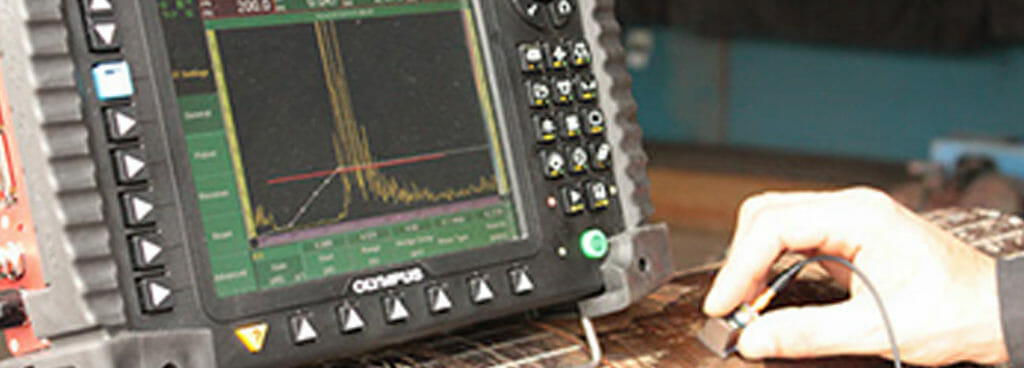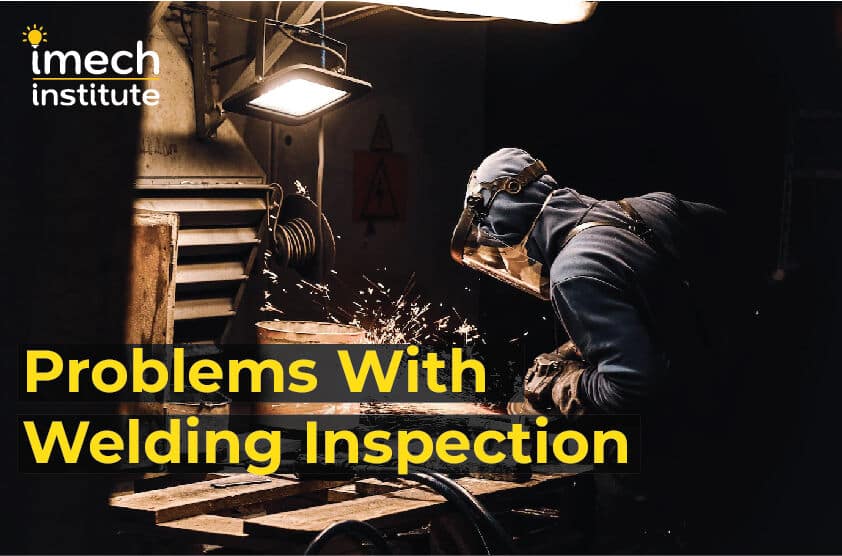Why You Need Specialist Welding Inspection Racine for Your Jobs
Ingenious Strategies to Fillet Weld Assessment and Testing: Enhancing Weld Top Quality and Conformity Requirements
In the world of welding, the top quality and honesty of fillet welds play an essential function in making sure the structural stability and reliability of various industrial elements. With the continuous drive for improved efficiency and compliance with rigid requirements, the expedition of ingenious methods to fillet weld evaluation and screening has come to be essential.
Advanced Non-Destructive Testing Techniques
Using state-of-the-art technologies, progressed non-destructive testing methods play a vital role in making sure the integrity and quality of fillet welds. These methods, such as phased variety ultrasonic screening (PAUT) and magnetic particle screening (MPT), offer in-depth insights into the weld's inner structure without causing any type of damages to the product. PAUT, for example, makes use of multiple ultrasonic elements to check the weld from various angles, giving an extensive visualization of prospective flaws like lack of blend or cracks.
Likewise, MPT is efficient in discovering surface-breaking problems by using a magnetic area and iron bits to the weld area. This technique is especially helpful for identifying discontinuities that might jeopardize the weld's toughness. By employing these innovative non-destructive testing strategies, weld assessors can precisely analyze the quality of fillet welds, guaranteeing compliance with sector requirements and policies. The ability to identify flaws early on not only boosts weld quality yet also stops costly rework or failings in architectural integrity, underscoring the relevance of these ingenious screening strategies in welding assessments.
Robotics and Automation in Examination
The assimilation of robotics and automation has actually transformed the examination procedure for fillet welds, boosting performance and precision in top quality assessment. Robotics provide exact control and repeatability in inspecting welds, guaranteeing regular and trustworthy results. Automated systems can be configured to follow certain evaluation courses, ensuring complete protection of welds and minimizing the danger of human error.
Robot evaluation systems outfitted with advanced sensing units can spot and measure weld functions with high precision, providing thorough information for analysis. These systems can determine problems such as splits, absence of combination, and porosity, allowing prompt restorative actions to be taken. Additionally, robotics and automation permit real-time data collection and evaluation, supplying instant comments to drivers and facilitating fast decision-making processes.
Moreover, making use of robotics and automation in fillet weld examination boosts total productivity by lowering inspection times and increasing evaluation throughput. By streamlining the inspection procedure, makers can guarantee weld high quality and compliance criteria are fulfilled effectively, ultimately resulting in set you back financial savings and enhanced item quality.
Using Expert System for Evaluation
Synthetic knowledge plays a critical function in boosting the efficiency and precision of evaluation in fillet weld examination processes. AI formulas can rapidly process huge amounts of information from weld examinations, spotting flaws or disparities that might be testing to determine with the nude eye - Welding Inspection Racine.
Additionally, AI systems can discover from previous inspection data, continually improving their capability to identify possible flaws and deviations in fillet welds. This flexible knowing capability enhances the total quality control process, decreasing the chance of human error and making certain that welds satisfy the needed requirements. By Look At This integrating fabricated knowledge right into fillet weld analysis, sectors can achieve greater levels of performance, uniformity, and compliance in their assessment methods.
Portable Tools for On-Site Assessment
 Enhancing area examination performance, the adoption of mobile tools reinvents on-site analysis procedures for fillet welds. These devices provide flexibility and ease, allowing assessors to conduct thorough assessments in various locations, including remote or tough atmospheres. Portable devices such as ultrasonic screening devices, magnetic particle assessment equipment, and electronic radiography systems give real-time data and high-resolution imaging capacities, making it possible for fast decision-making and instant responses on weld high quality.
Enhancing area examination performance, the adoption of mobile tools reinvents on-site analysis procedures for fillet welds. These devices provide flexibility and ease, allowing assessors to conduct thorough assessments in various locations, including remote or tough atmospheres. Portable devices such as ultrasonic screening devices, magnetic particle assessment equipment, and electronic radiography systems give real-time data and high-resolution imaging capacities, making it possible for fast decision-making and instant responses on weld high quality.One significant benefit of mobile devices is their ability to improve evaluation procedures, lowering downtime and enhancing total efficiency. Inspectors can conveniently carry these tools to different job sites, eliminating the need for transporting hefty machinery or elements to off-site facilities. Additionally, the portability of these tools promotes cost-effectiveness by decreasing transportation expenditures and speeding up inspection timelines.
In addition, the use of mobile devices for on-site examination advertises aggressive top quality control steps, as examiners can immediately identify and address any kind of possible welding issues or inconsistencies. By incorporating these cutting-edge innovations right into on-site inspection practices, welding professionals can make certain conformity with industry criteria and improve weld top quality, ultimately resulting in enhanced architectural stability and security in numerous welding applications.
Integration of Data Management Equipment
Having optimized on-site examination procedures via the application of portable devices, the following phase includes the smooth assimilation of data monitoring systems to additionally enhance effectiveness and data evaluation abilities in fillet weld inspection and screening. Welding Inspection Racine. By integrating data management systems right into the inspection process, organizations can streamline information collection, storage space, and analysis. This combination enables real-time surveillance of weld quality, prompt recognition of issues, and punctual decision-making to rectify any kind of issues that may develop during the inspection procedure
Information administration systems play a vital role in streamlining examination information, assisting in very easy access for accredited employees, and guaranteeing information stability and safety and security. Through the combination this content of these systems, assessors can generate thorough records, track historic data for fad evaluation, and improve total process efficiency. Additionally, the assimilation of data administration systems makes it possible for smooth interaction in between different stakeholders included in the inspection process, promoting collaboration and boosting general high quality control measures. Ultimately, the integration of data administration systems serves to boost the criteria of fillet weld inspection and testing, guaranteeing conformity with market regulations and improving weld top quality.
Conclusion
Finally, innovative approaches to fillet weld examination and testing site link have actually significantly boosted weld top quality and conformity standards. Advanced non-destructive screening approaches, robotics, automation, expert system, portable tools, and data administration systems have reinvented the means weld assessments are conducted. By utilizing these modern technologies, sectors can ensure that welds fulfill the required high quality standards and policies, inevitably enhancing general performance and security in welding processes.

By employing these advanced non-destructive testing techniques, weld inspectors can properly evaluate the top quality of fillet welds, making certain compliance with sector criteria and laws. Portable tools such as ultrasonic screening tools, magnetic bit evaluation devices, and digital radiography systems give real-time data and high-resolution imaging capabilities, making it possible for quick decision-making and instant feedback on weld top quality.
Having actually maximized on-site assessment processes through the use of mobile tools, the next phase entails the smooth integration of data management systems to further improve efficiency and information analysis capabilities in fillet weld examination and testing (Welding Inspection Racine). Eventually, the integration of information administration systems serves to boost the criteria of fillet weld evaluation and testing, ensuring conformity with market guidelines and improving weld quality
 In conclusion, cutting-edge methods to fillet weld examination and testing have considerably improved weld quality and compliance standards.
In conclusion, cutting-edge methods to fillet weld examination and testing have considerably improved weld quality and compliance standards.